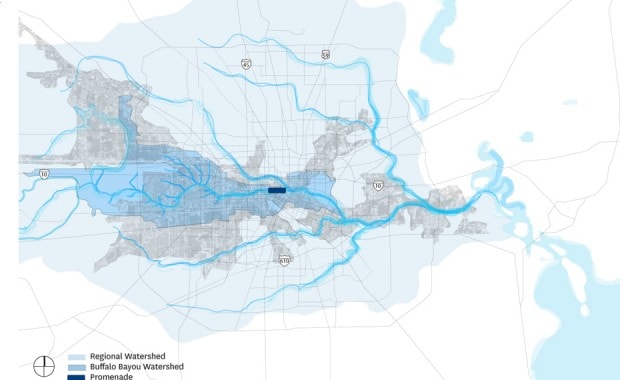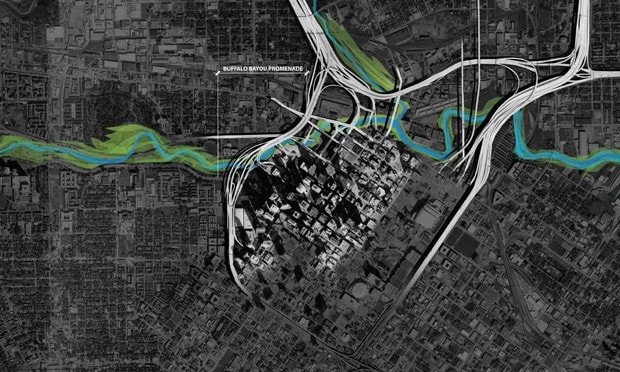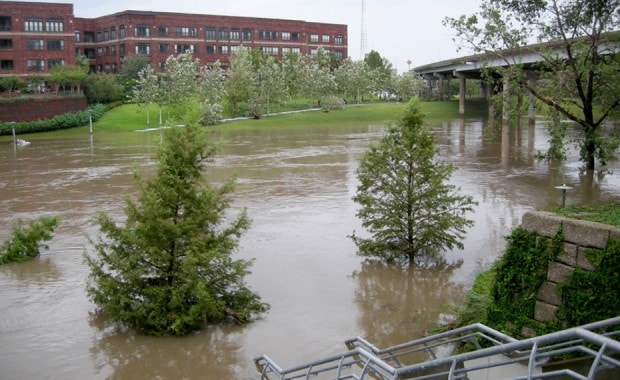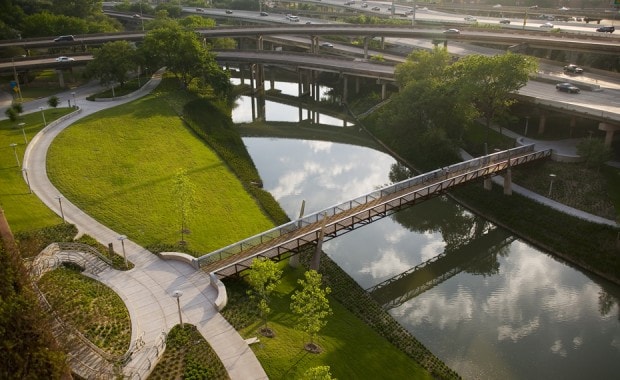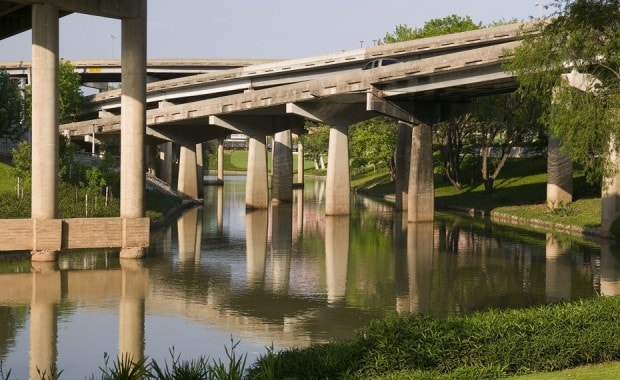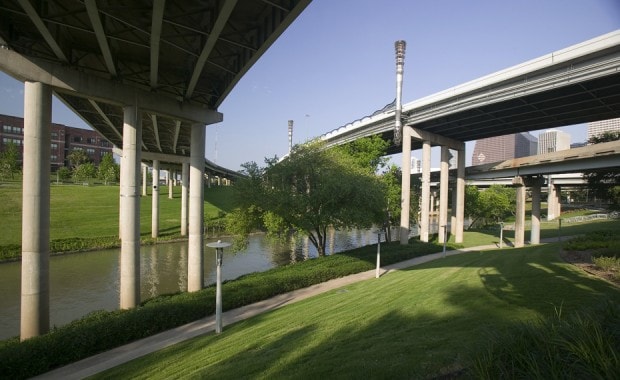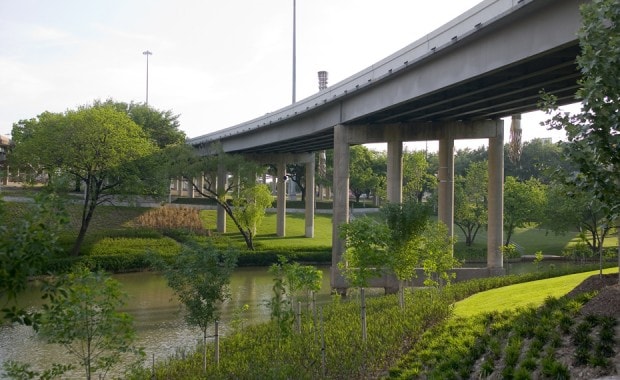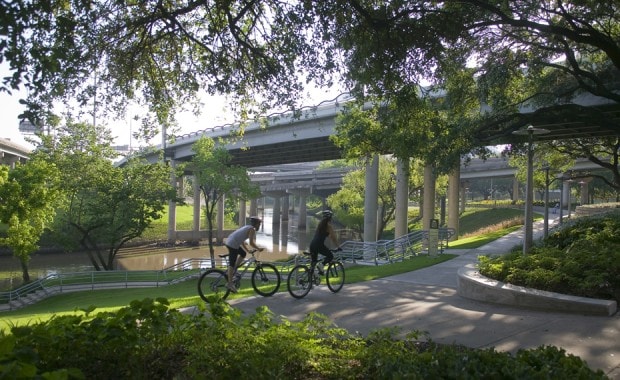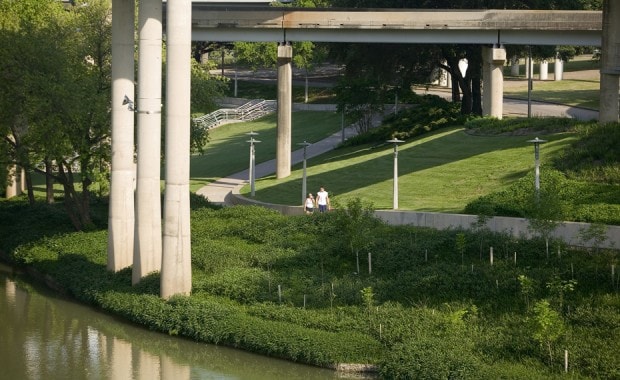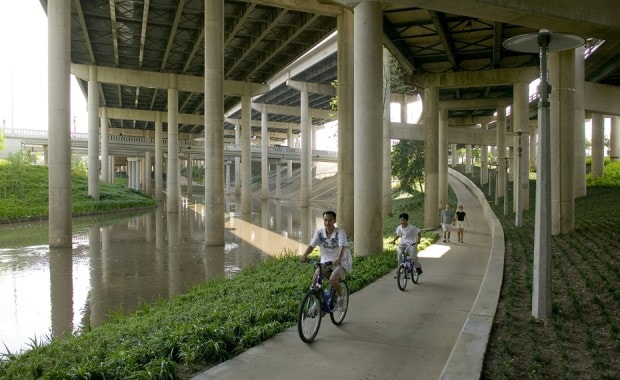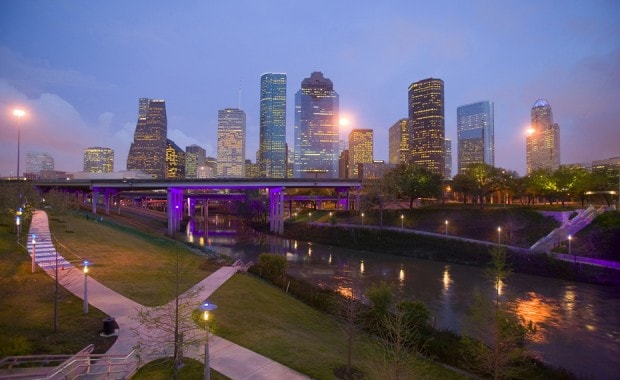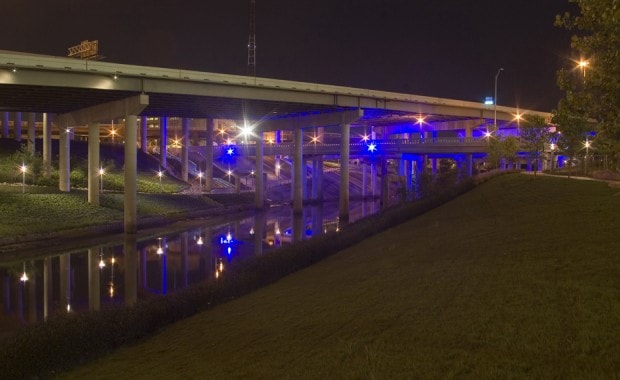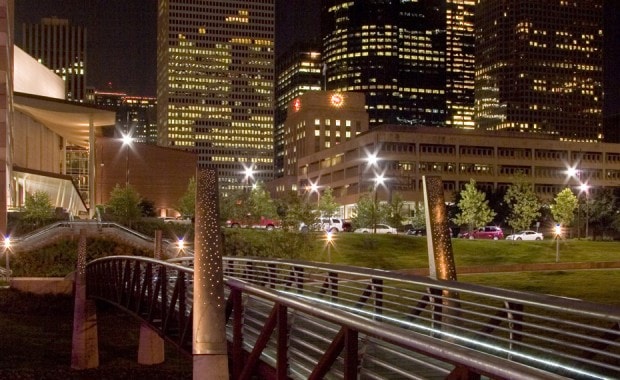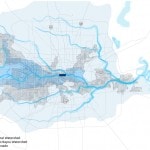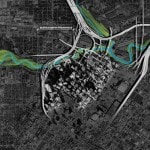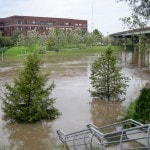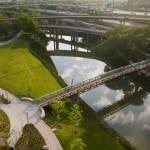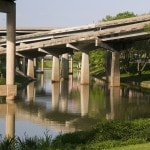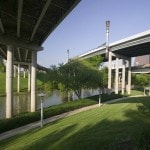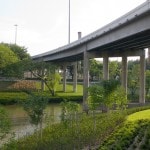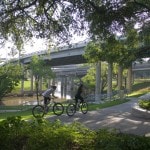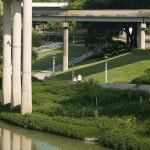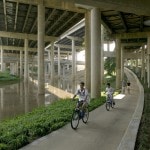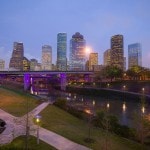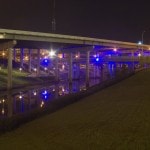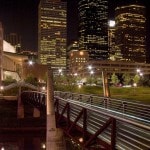Project: Buffalo Bayou Promenade
Location: Houston, TX
Firm: SWA Group
Year: 2010
Firm website: www.swagroup.com
Project Description: Since Arthur Comey did his city plan for Houston in 1912, people have talked about making the city’s bayous into linear parks. It was not until the 1970s and 80s that the pieces began to fall into place. But serious gaps remained. The 1.2 mile long Buffalo Bayou Promenade was a critical missing link, tying the pastoral Buffalo Bayou Park to the west with the theater district and Houston’s downtown to the east. The Buffalo Bayou Partnership hired SWA Group to provide an early conceptual master plan transitioning urban bayou treatments to the pastoral bayou east and west of downtown which had been encircled by freeways and arterials. More recently, SWA was commissioned to complete the design of the west connection, addressing the unique physical constraints and challenges of the site while celebrating its urban and natural context in the heart of the city.
Traditionally, development had turned its back to this portion of the bayou. Towering freeway structures criss-cross the corridor, blocking out sunlight and spilling concentrated sheets of water off their sides during rain storms. Debris, trash, and silt travel along the waters of the bayou and are constantly deposited on the banks. Pedestrians who venture into this segment are more than thirty feet below the grade of surrounding streets, out of view, and with few access and egress points. Severe erosion occurred on excessively steep banks, while overgrown and invasive plantings created unsafe walking conditions for pedestrians. Recognizing these challenges, the design team employed a number of site specific solutions to make a successful pedestrian environment.
Extensive re-grading of the site enabled the team to lay back slopes, thereby helping to improve views into the park while also reducing the impact of erosion and improving flood water conveyance. The design used exposed concrete, recycled crushed concrete, and galvanized steel for their durability, cost effectiveness, and contextual relevance. The planting design re-established a living green tissue into an otherwise sterile environment leading into to the urban core. Groves of re-introduced native trees soften the harsh urban infrastructure, buffer noise, and mitigate the scale of the freeways.
Because Buffalo Bayou is the principal drainage system for much of Houston, the design team had to treat the waterway and its banks with special care. Gabion edge treatments offer visual clarity and therefore safety while utilizing over 14,000 tons of recycled crushed concrete. The stepped design accommodates changes in water levels while filtering floating storm debris. The open gabion cages also allow tree roots and riparian ground covers to form a natural edge while providing a porous foundation for the riparian benthic community.
The success of the park is measured, in large part, by its ability to function as a safe pedestrian environment at night. The landscape architects conceived of three orders of lighting to illuminate the park: a primary trail lighting system, a system of lights to wash through “dark nooks and crannies,” and an art-driven lighting component.
The 1.2 mile stretch of the Sabine-to-Bagby Promenade passes many of Houston’s historic and present day landmarks. Integrated within the wayfinding system, interpretive signage highlights the history of the waterway and the city of Houston. The design simultaneously celebrates historical infrastructure like the concrete foundations of Houston’s first civic center while educating pedestrians about flood-resistant native plants.
Project Team Members: SWA Group, Landscape Architect.
Lead Designer: Kevin Shanley; Project Team: Tim Peterson, Scott McCready, Lance Lowrey, Rhett Rentrop, John Brandt.
Ann Olson, President, Buffalo Bayou Partnership.
Joe Turner, Director, City of Houston Parks and Recreation Department.
Photography Credits: Tom Fox, Bill Tatham, SWA Group.
Additional Project Credits:
Architectural Lighting: Herve Descottes; Stephen Korns, Artist
Public Art Sculpture: John Runnels, Artist
Geotechnical: Fugro South, Inc.
Civil Engineering: United Engineers, Inc.
Structural Engineering: Ken Tan and Associates
Electrical Engineering: Ferguson Consulting, Inc.
Planting Design: Mary L. Goldsby Associates – Landscape Architect
Irrigation Design: Ellis Glueck and Associates
Contractor: Boyer, Inc.
| previous project | next project |

